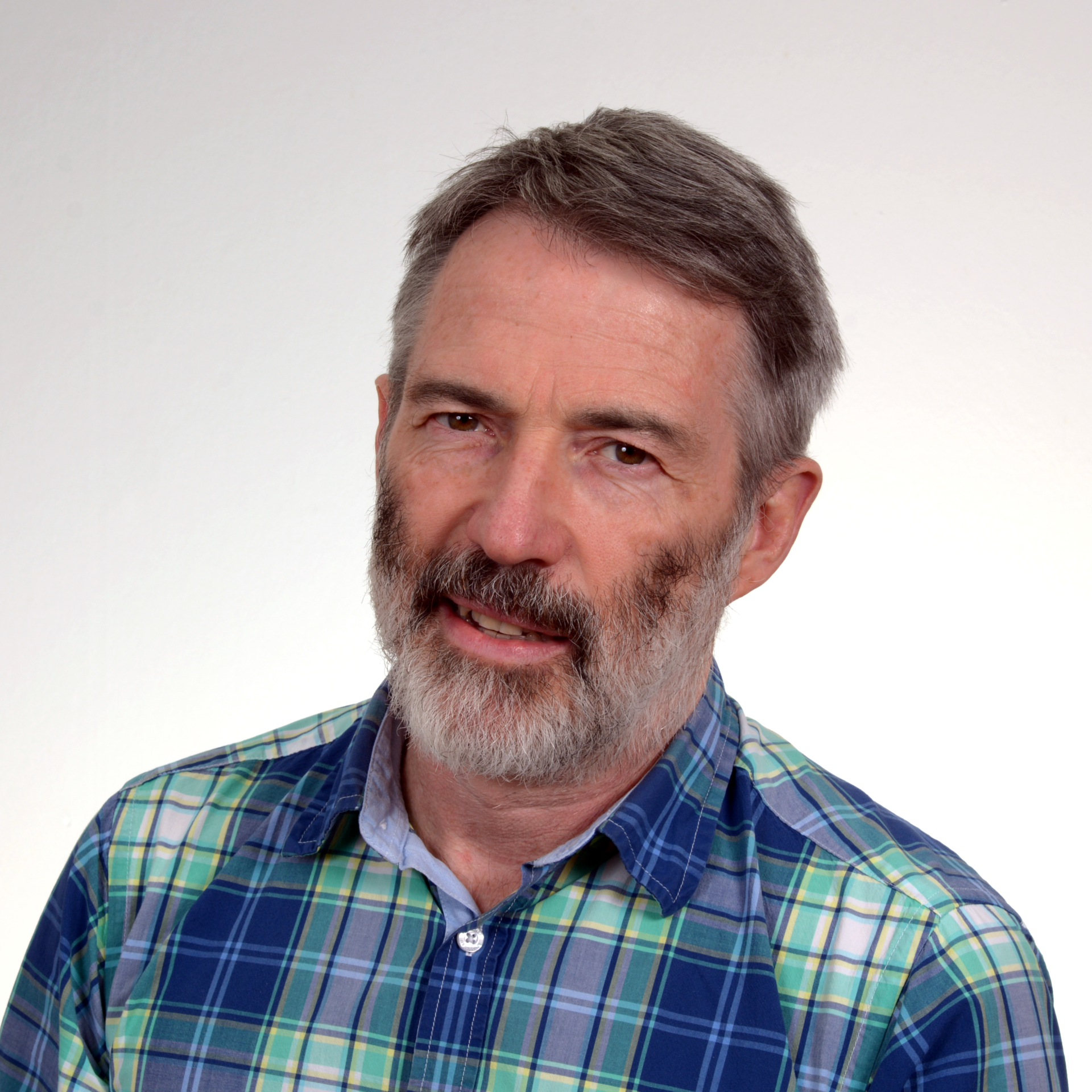J. Bruno Debruille, MD, PhD

Head, Cognitive and Social Neuroscience Lab, Douglas Research Centre
Attending Psychiatrist, Out-patient Clinic of the Psychotic Disorders Program, Douglas Mental Heath University Institute
Associate Professor, Department of Psychiatry, McGill University
Associate Member, Department of Neurology and Neurosurgery, McGill University
Lab name: Cognitive and social neuroscience
Division: Clinical Research
Dr. Debruille is an Associate Professor of clinical psychiatry in the Division of Adult Psychiatry at McGill University. He runs the Cognitive & Social Neuroscience lab, a proudly low-tech and high-audacity facility at the Douglas Hospital Research Center. The members of his team record response accuracies, reaction times, EEGs and compute event-related brain potentials (ERPs) elicited by the presentation of meaningful stimuli, such as faces, scenes and words. They currently have three axes of research. The first derives from their discovery of the impacts of stimulus processing on ERPs of close others. It is an attempt at approaching the physical nature of conscious percepts and the mechanisms of their production in usual, illusory or hallucinatory states. The second axis focuses on the drive to play social roles and on the effects of the negative symptoms of schizophrenia and of antipsychotic medications on those drives. The third axis pertains to the effect of the social context, that is, to the effect of the presence of a friend or of a stranger, on the cognitive processes induced by stimuli. In his clinical practice at the psychotic disorder program of the Douglas Institute, Dr. Debruille specializes in the rehabilitation of people suffering from schizophrenia, mainly by de-stigmatizing psychotic symptoms, boosting motivation by favouring the emergence of new social roles and by teaching how to adjust medications.
During my training in psychiatry, I was interested in the mechanisms of preconscious and conscious identification. I did a PhD thesis on subjects with brain damage having only a precons-cious recognition of the faces of familiar people (prosopagnosics). I did my psychiatric thesis on patients consciously recognizing these faces but denying they are those of such persons (Capgras syndrome). In the 2 cases, I made the hypothesis that an inhibition, indexed by a particular brain potential, the so-called N400, prevented some representations preconsciously activated by faces, to enter the content of working memory.
Invited by Marta Kutas to test this hypothesis that the N400 brain potential is generated by inhibition processes, I showed that words that preconsciously activate more inaccurate representations (like the word “bribe”, which also activates the word “bride”) and that therefore require more inhibition, evoke greater N400s. I continued to test this inhibition-N400 hypothesis and built a simple framework of the processing of the information conveyed by stimuli (see summary of research). Accordingly, the brain potential following the N400, the P3b-P600, indexes the consciousness of the stimulus and of the meaning of its occurrence in the situation of the experience.
Today, a part of my work focuses on the elementary constituents of consciousness, that is, on qualia. In philosophy, one can consider that they are unique to each individual. But in practice, we always assume that others have similar qualia and that the perceptual world produced by their neurons is similar to ours without taking into consideration the fact that events in consciousness are private.
This assumption of similarity, from which those suffering from mental illness seem to be sometimes excluded, is the basis of the social consensus and of language. However, the origin of this similarity remains mysterious and the radical qualitative difference existing between smells, sounds and colors, for example, contrasts with the resemblance of the neural activities that produce them. The localization of these qualia is also surprising when taking into account the fact that they are produced by the brain. Outside for these three elements, it is internal for emotions, ideas and intentions, except during out-of-body experiences, where these latter sensations are located outside the body. To these experiences, which, today, are induced simply, one can add those of dual conscious presences: the one that is perceived in the avatar in whom we are embodied within the virtual reality displayed and the one that is known to be true, which is the presence in the room where we adjusted the head mounted display in front of our eyes.
This, and other facts, suggest that there may be a physical difference between neuronal activities and the qualia they produce. To test the reality of this difference and the means by which qualia could be similar between individuals, we examine the hypothesis that neurons can produce, in addition to their computational activity, a non-local physical phenomenon that can influence the brain activity of others and have an impact on the qualia they produce. This hypothesis is examined in classical situations and should soon be explored in virtual realities, in collaboration with the Mel Slater, in Barcelona.
If this hypothesis were confirmed, it could have an impact in psychiatry. One could reconsider hallucinations, thought insertions, intentions and the weird feelings reported by psychotic patients as not originating from them. They could be seen as due to a particular sensitivity to these influences, to a deficit of the mechanisms that merge them with their own qualia, to an ability to differentiate these qualia from theirs, or to a deficit of their inhibition. In all these cases, it would be a weapon against the stigma they are subject of, a way to explain their originality relative to others and a track for them to harness their specificities.
Morgan S. White, PhD student
Gifty Asare, MSc student in psychiatry
Maud Haffar, MSc student at the integrated program in neurociences, McGill
Philip Léger : Research associate,
Elsa Kassardjian, Tatiana Sanchez, Anick Boyer, Albert Formanek, Rachel Petrie : Summer trainees, Undergraduate students
Post-doctoral position in social cognition & conscious perception
PhD student position in the study of the role of the self in perception
PhD student position in the effect of antipsychotic medication on consciousness.
- Shang, M. and Debruille, J. B. (2013). N400 processes inhibit inappropriately activated representations: Adding a piece of evidence from a high-repetition design. Neuropsychologia, 51, 1989-97
- Debruille, J. B. and Brodeur M. B. (2012) N300 and social affordances: A study with a real person and a dummy as stimuli. PLoSOne, 7(10): e47922.
- Renoult, L., X. Wang, X. Calcagno, V., Prévost’ M. & Debruille, J. B. (2012) From N400 to N300: variations in the timing of semantic processing with repetition. NeuroImage, 61(1), 206-15
- J. B. Debruille & M. B. Brodeur* & U. Hess (2011) Assessing the way people look to judge their intentions. Emotion 11(3), 533-43.
- Bouten S and Debruille JB. (2014) Qualia as social effects of minds [v1; ref status: approved with reservations 1, http://f1000r.es/4xm] F1000Research 2014, 3:316 (doi: 10.12688/f1000research.5977.1)
